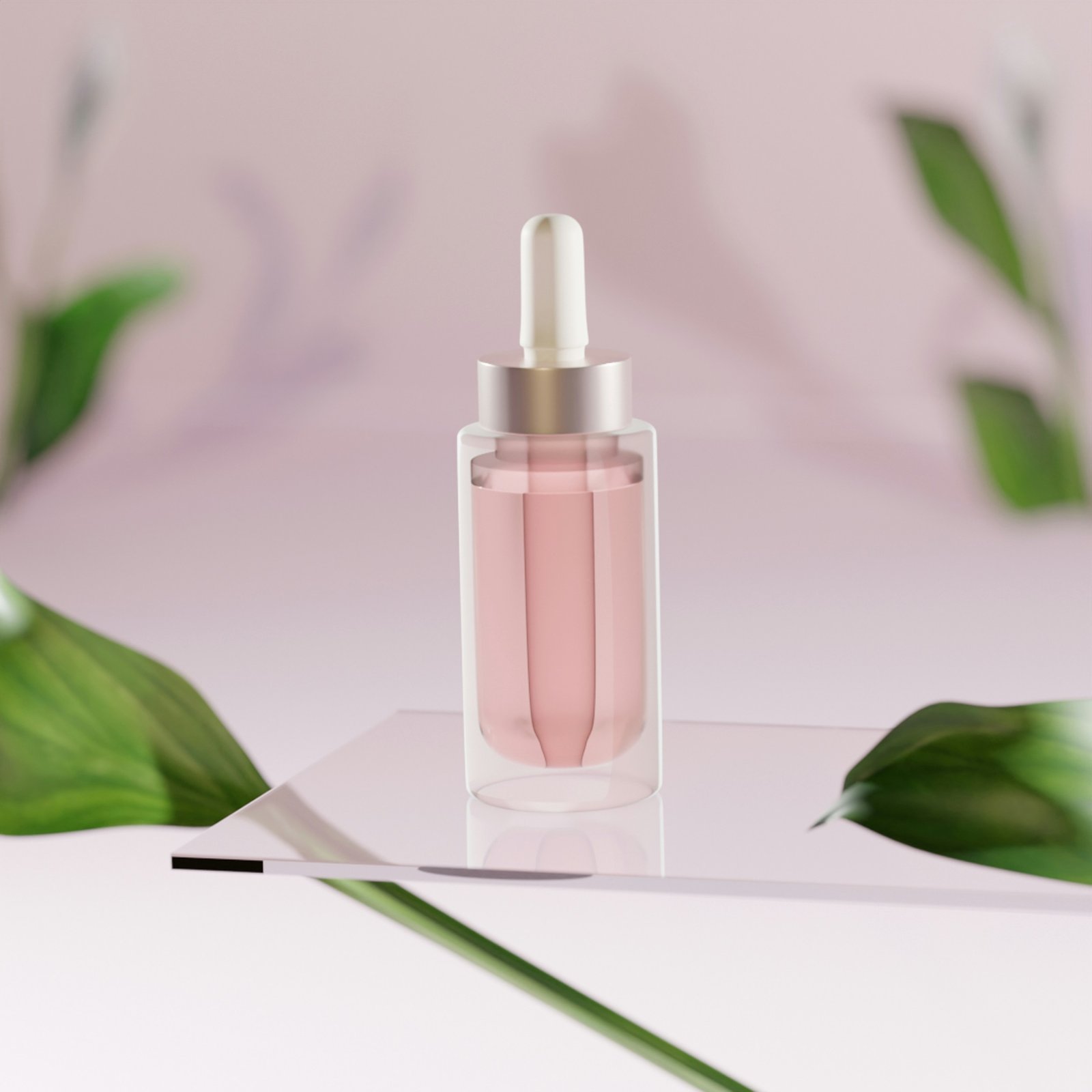Introduction to Green Beauty Products
In recent years, the cosmetics industry has witnessed a significant transformation, ushering in the era of green beauty products that champion eco-friendliness and sustainability.
Green beauty products refer to cosmetics that are formulated using natural ingredients that are ethically sourced, biodegradable, and free from harmful chemicals such as parabens, sulfates, and synthetic fragrances.
This shift from traditional cosmetics to eco-friendly cosmetics is propelled by an increasing awareness among consumers about the impact of their purchasing decisions on both personal health and the environment.
Characterized by their commitment to safe, non-toxic ingredients, eco-friendly cosmetics often incorporate plant-based oils, extracts, and minerals that not only nourish the skin but also minimize environmental impact.
Brands producing green beauty products typically focus on transparent labeling and sustainable packaging options, opting for recyclable or compostable materials to reduce waste and promote sustainable practices.
This dedication to ecological responsibility has resonated with consumers who are increasingly seeking products that align with their values.
The motivation behind the rise of green beauty products can be attributed to growing consumer awareness regarding the detrimental effects of conventional cosmetics on health and the environment.
Reports highlighting skin sensitivities and ecological concerns have prompted individuals to reconsider their beauty routines, leading to a greater demand for cosmetics that prioritize both individual well-being and the planet.
Social media and influencer endorsements have also played pivotal roles in spreading information about green beauty, further encouraging discussions on sustainability and ethical consumption.
In conclusion, green beauty products represent a paradigm shift in the cosmetics industry, prioritizing natural ingredients and sustainable practices.
As consumers continue to seek eco-friendly cosmetics that reflect their commitment to health and sustainability, the viability and diversity of these products is poised for continued growth.
The Global Market for Sustainable Cosmetics
The global market for eco-friendly cosmetics has witnessed significant growth in recent years, driven by an increasing consumer awareness regarding the impact of beauty products on the environment and well-being.
According to market research, the sustainable cosmetics sector is projected to grow at a compound annual growth rate (CAGR) of approximately 10% over the next five years, reflecting the shift towards more responsible consumer choices.
Regions including North America and Europe lead the way in demand for sustainable cosmetics, largely due to a heightened emphasis on eco-friendly living and stringent regulations governing product ingredients.
The European market, in particular, has seen a surge in the availability of organic skincare products, propelled by a consumer base that prioritizes ethical considerations in their purchasing decisions.
Furthermore, the Asia-Pacific region is emerging as a key player in this trend, with countries such as Japan and South Korea adopting green beauty practices rapidly.
Popular categories within the eco-friendly cosmetics market include organic skincare, which has become synonymous with natural and chemical-free formulations.
Brands specializing in cruelty-free makeup are also gaining traction as consumers increasingly seek products that align with their ethical values.
Another noteworthy trend is the rise of refillable beauty products, which not only minimize waste but also appeal to environmentally conscious consumers.
In addition to these product types, the industry is witnessing innovation driven by technological advancements in sustainable sourcing and manufacturing processes.
Brands committed to eco-friendly practices are investing in greener production methods, further enhancing their appeal to the modern consumer.
Overall, the sustainable cosmetics market is an evolving landscape, characterized by a burgeoning demand for environmentally friendly products that cater to a conscious audience.
Key Factors Driving Demand for Eco-Friendly Products
In recent years, there has been a significant shift in consumer behavior, especially concerning purchasing decisions related to beauty products.
One of the primary factors contributing to the rising demand for eco-friendly cosmetics is the increasing awareness of environmental issues.
As consumers become more informed about the impact of conventional beauty products on the planet, they are gravitating towards options that emphasize sustainability and ethical production practices.
Moreover, the influence of social media platforms cannot be underestimated. Channels like Instagram and TikTok have created a space for influencers and eco-conscious brands to showcase their products and values.
These platforms allow consumers to engage with brands on a personal level, promoting a community-focused approach to beauty.
Through storytelling and visually appealing content, brands that prioritize eco-friendly cosmetics have successfully captured the attention and loyalty of a growing audience looking for sustainable alternatives.
Celebrity endorsements have also played a crucial role in this trend. High-profile figures who advocate for environmental causes can significantly sway consumer choices.
When celebrities choose to promote eco-friendly products, they not only highlight their benefits but also normalize the idea of sustainable beauty within mainstream culture.
This peer influence leads millennials and Gen Z, who are particularly passionate about environmental sustainability, to seek out green beauty products.
These generations are increasingly prioritizing their values in their purchasing habits, revealing a strong preference for brands that align with their beliefs.
As ethical consumerism gains momentum, the beauty industry is witnessing a profound transformation.
The convergence of consumer awareness, social media influence, and generational values is establishing a robust platform for eco-friendly cosmetics, paving the way for lasting change in the beauty market.
Challenges in Exporting Eco-Friendly Cosmetics
As the demand for eco-friendly cosmetics continues to rise, companies in the green beauty sector are faced with a range of challenges when attempting to export their products.
One of the primary hurdles is navigating the complexities of regulatory compliance. Different countries have varying regulations governing cosmetic ingredients, labeling, and safety standards.
This can lead to confusion for companies striving to align their products with international norms while maintaining their eco-friendly ethos.
For example, certain natural ingredients that are favored in one market may be restricted in another, creating barriers to entry for businesses.

Additionally, differing international standards present a formidable challenge. Companies must invest significant time and resources to understand these regulations thoroughly.
The lack of a unified global framework for eco-friendly cosmetics means that brands may need to adapt their products or formulations for each target market.
This can result in increased production costs and ultimately, affect product pricing and profitability. Moreover, companies that fail to comply with local regulations risk facing legal consequences, further complicating their export endeavors.
Another critical aspect to consider is the sustainability of the supply chain.
Maintaining eco-friendly practices throughout the manufacturing and distribution process becomes increasingly challenging as companies engage with international partners.
Ensuring that sourcing, production, and shipping adhere to sustainable practices requires diligent oversight.
Any compromises made during this process can undermine a company’s commitment to environmental responsibility, thus affecting consumer perception and market competitiveness.
Balancing the demands of scaling a business globally with the commitment to sustainable practices presents a complex challenge for eco-friendly cosmetics brands aspiring to export their products.
Eco-Friendly Ingredient Sourcing and Innovation
The movement towards eco-friendly cosmetics has prompted an increased focus on sustainable ingredient sourcing, which is essential for the production of green beauty products.
This shift not only caters to the growing consumer demand for ethically sourced products but also aligns with the global imperative for environmental sustainability.
Brands are now prioritizing ingredients that are derived from natural, organic, and responsibly cultivated resources.
By ensuring that their sourcing practices are both ethical and sustainable, companies contribute to reducing environmental degradation, fostering biodiversity, and supporting local communities.
Innovation plays a crucial role in the development of eco-friendly cosmetics. One notable trend is the utilization of natural ingredients, which are often safer for the skin and result in less chemical runoff into the environment.
Organic ingredients, cultivated without synthetic fertilizers or pesticides, further enhance the appeal of green beauty products, providing consumers with formulations that are less likely to cause adverse reactions.
Moreover, lab-grown ingredients represent a significant breakthrough in the formulation of eco-friendly cosmetics.
This innovative approach allows for the creation of high-quality ingredients without the ecological footprint associated with traditional extraction methods.
For instance, lab-grown collagen can replace animal-derived collagen, thus appealing to vegan consumers while minimizing the environmental impact associated with livestock farming.
In addition to benefiting the environment, these sustainable sourcing practices and innovative formulations also cater to consumer preferences for transparency and sustainability.
With a growing awareness of the potential environmental impacts of personal care products, consumers are increasingly seeking brands that prioritize eco-friendly ingredient sourcing.
This trend not only supports a paradigm shift towards more sustainable production methods but also inspires other brands to follow suit.
As the landscape of green beauty continues to evolve, the integration of sustainable practices will remain a central element in the quest for more eco-friendly cosmetics.
Case Studies: Successful Green Beauty Brands
The landscape of the cosmetics industry is continually evolving, driven by consumer preferences that increasingly favor eco-friendly cosmetics.
Several brands have successfully capitalized on this trend, becoming prominent players in the export market while upholding sustainable practices.
One notable example is the brand Aether Beauty, which is committed to sustainability at every phase of product creation.
Their emphasis on recyclable packaging and plant-based ingredients has attracted a dedicated clientele that values environmental responsibility.
This brand’s clear marketing strategy focuses on transparency and ethical sourcing, enabling them to resonate strongly with the growing segment of consumers who are environmentally conscious.
Another case study worth mentioning is Lush, a pioneer in producing fresh, handmade cosmetics that prioritize sustainability.
Their zero-waste campaign and commitment to using ethically sourced materials have helped the brand establish a strong international presence.
By combining creative marketing strategies with education on sustainability, Lush has successfully engaged consumers, encouraging them to make informed choices about their beauty products.
This approach not only drives sales but enhances brand loyalty among consumers who appreciate their eco-friendly cosmetics philosophy.
RMS Beauty is another significant player in the green beauty sector. The brand emphasizes the use of organic ingredients and minimal processing to maintain the integrity of each product.
Their strategies in promoting eco-friendly cosmetics through a strong online presence and collaborations with eco-conscious influencers have positioned them effectively in various markets.
By highlighting the health benefits of their ingredients alongside environmental advantages, RMS Beauty has successfully attracted a clientele that seeks both efficacy and sustainability.
These case studies illustrate that success in the eco-friendly cosmetics market relies not only on sustainable practices but also on effective marketing strategies that educate and engage consumers.
By prioritizing transparency, ethical sourcing, and environmental responsibility, these brands pave the way for a more sustainable beauty industry.
Consumer Perception and Education on Sustainability
The increasing awareness of environmental issues has significantly influenced consumer perception regarding sustainability in recent years.
As individuals become more conscious of their ecological footprint, the demand for eco-friendly cosmetics is on the rise.
Factors such as product sourcing, packaging materials, and ethical production processes weigh heavily on consumers’ purchasing decisions.
Today, beauty aficionados are more informed and discerning, seeking products that align with their values and prioritize sustainability.
Moreover, the differentiation between conventional and green beauty products is essential for consumers.
While traditional cosmetics often contain harmful chemicals and have a detrimental impact on the environment, eco-friendly cosmetics utilize natural ingredients and sustainable practices.
This distinction plays a crucial role in attracting consumers who are increasingly looking for safer alternatives for their skin and the planet.
By opting for eco-conscious products, consumers not only invest in their well-being but also contribute to a broader movement aimed at promoting environmental sustainability.
Education is paramount in fostering a deeper understanding of the benefits associated with eco-friendly cosmetics.
Many consumers may not be fully aware of the advantages of using green beauty products, such as the absence of harmful chemicals, ethical sourcing practices, and biodegradable packaging.
Beauty brands and industry stakeholders are encouraged to engage in transparent marketing strategies that highlight these benefits.
Informative campaigns can demystify the terms associated with sustainability and encourage consumers to make informed choices.
By actively educating the public, brands can cultivate a more environmentally responsible community and stimulate demand for eco-friendly alternatives that both nourish the skin and support the well-being of the planet.
Future Trends in Eco-Friendly Cosmetics
The eco-friendly cosmetics industry is poised for significant evolution, driven by various factors such as technological advancements, shifting consumer preferences, and evolving regulatory landscapes.
As consumers become increasingly conscious of the impact their choices have on the environment, the demand for sustainable beauty products is expected to grow exponentially.
This trend indicates a move towards products that utilize biodegradable ingredients, recyclable packaging, and formulations free from harmful chemicals.
One of the notable trends shaping the future of eco-friendly cosmetics is the adoption of innovative technologies.
Brands are now leveraging biotechnology to develop ingredients that are both effective and sustainable.
For instance, lab-grown ingredients and plant-derived compounds are gaining traction, offering a sustainable alternative to traditional sources that may lead to deforestation or habitat destruction.
Additionally, advances in manufacturing processes, such as eco-friendly extraction methods, are making it easier for companies to produce their products with minimal environmental impact.
Consumer preferences are also evolving towards minimalism, with many individuals seeking out products that are multifunctional and made with fewer, high-quality ingredients.
This shift encourages cosmetic brands to streamline their offerings, focusing on essential solutions that deliver multiple benefits without excessive waste.
Moreover, the rise of clean beauty influencers and social media campaigns are shaping public perception of what constitutes a responsible brand, prompting companies to be more transparent about their sustainability practices.
Furthermore, potential changes in regulations regarding ingredients and packaging could significantly affect the industry landscape.
As governments worldwide implement stricter guidelines to curb pollution and promote sustainability, eco-friendly cosmetics may see a surge in certification requirements and eco-labeling initiatives.
These changes could help consumers make informed choices while encouraging brands to adopt greener practices.
In conclusion, the future of eco-friendly cosmetics is likely to be influenced by technology, consumer trends towards minimalism, and regulatory shifts that prioritize sustainability, positioning the industry for continued growth and innovation.
Conclusion: The Way Forward for Green Beauty Exporters
As the global trend towards sustainability and environmental consciousness continues to grow, the eco-friendly cosmetics industry is positioned for significant expansion.
This rise is mainly driven by increasing consumer awareness regarding the impact of traditional beauty products on both health and the environment.
For businesses looking to enter or expand within this market, aligning their practices with the principles of sustainability is crucial.
Key considerations include ensuring that products are formulated with natural, non-toxic ingredients, utilizing recyclable or biodegradable packaging, and adopting ethical sourcing practices.
Moreover, green beauty exporters need to focus on transparency and authenticity, as modern consumers prioritize brands that are honest about their ingredients and manufacturing processes.
Building trust through clear communication and third-party certifications can significantly enhance brand reputation within this competitive space.
Additionally, understanding regional market demands is essential; businesses should conduct thorough research to identify consumer preferences, regulatory requirements, and emerging trends in different geographical areas.
Innovation should be a cornerstone of any eco-friendly cosmetics strategy.
This could involve the development of unique formulations, integration of novel ingredients derived from sustainable sources, or the implementation of cutting-edge technologies designed to minimize environmental footprint.
By embracing a mindset geared towards continuous improvement and adaptability, companies can not only meet current demands but also anticipate future market shifts.
Finally, as the landscape of beauty products continues to evolve, companies must remain committed to their core mission of sustainability.
The key to thriving in eco-friendly cosmetics lies in maintaining a strong connection with consumer values, driving both compliance with environmental standards and fostering customer loyalty.
By keeping sustainability at the heart of their operations, green beauty exporters can ensure long-term success amid the ever-changing demands of the beauty industry.






No comment yet, add your voice below!